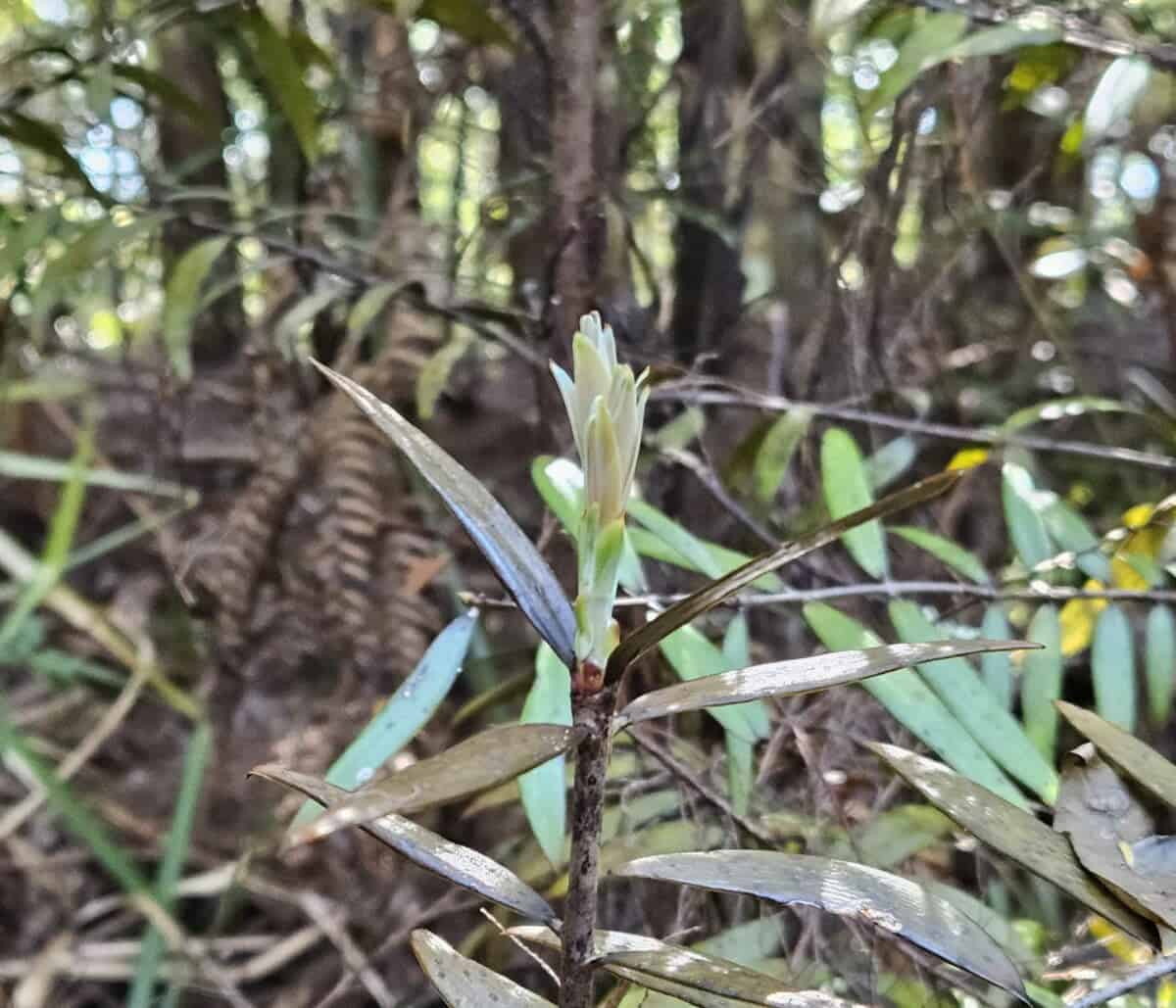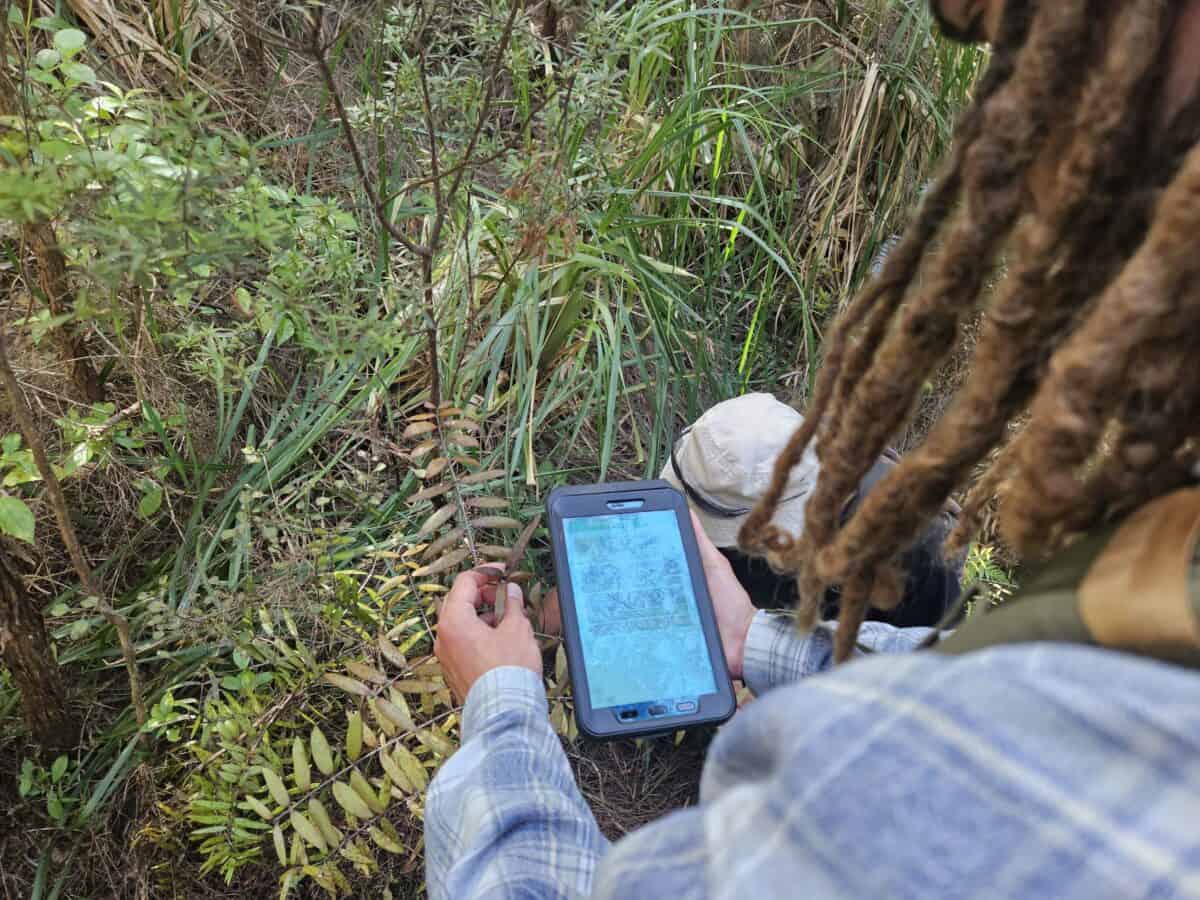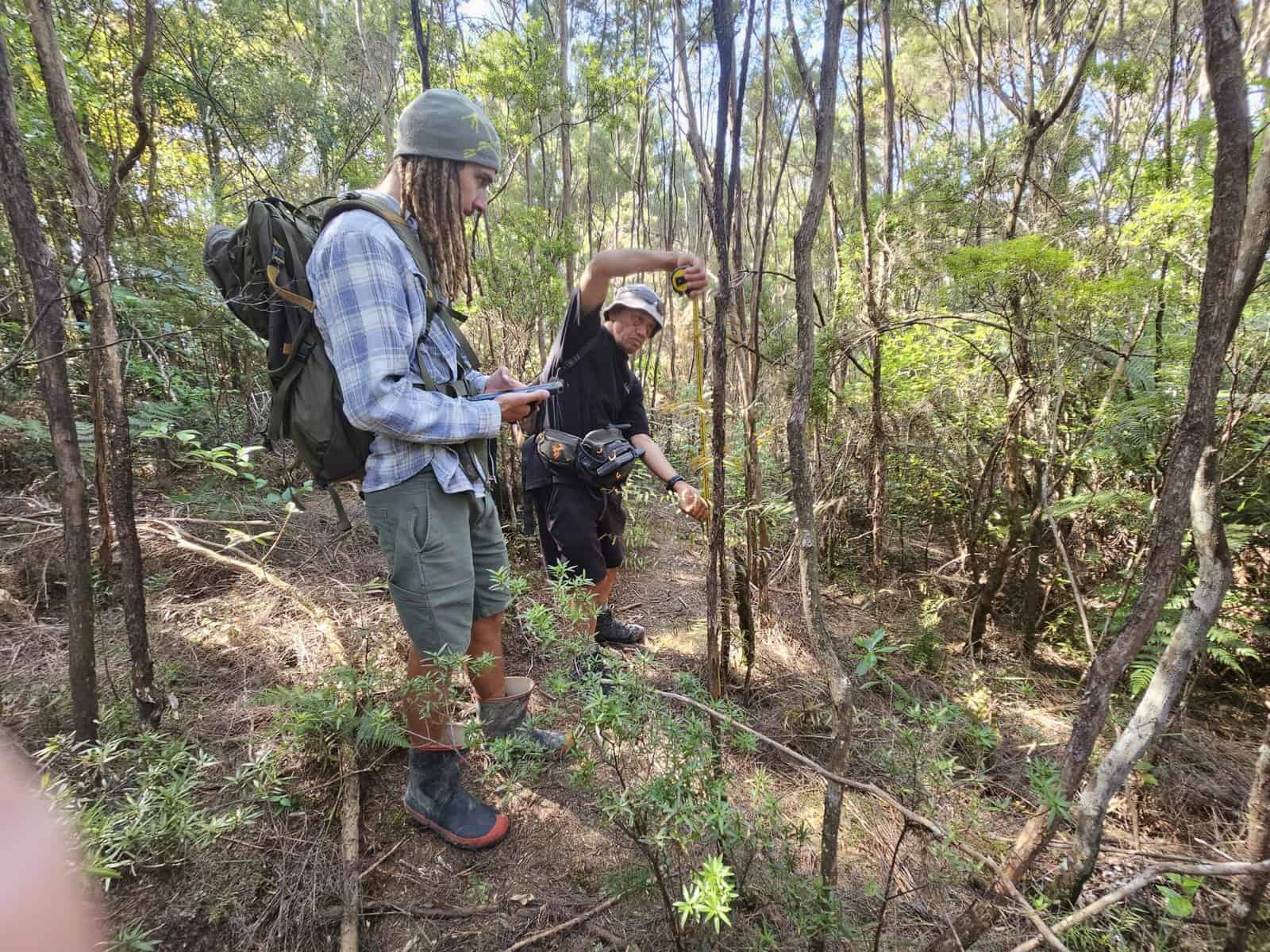Between 2013 and 2019, Scion led a six-year collaborative research programme to address the threat of Phytophthora species to New Zealand’s natural and agricultural forest estates. As part of the programme, called Healthy Trees, Healthy Future, several mana whenua groups sent their kauri seeds to Scion to be tested for resilience against Phytophthora agathidicida (PA), the pathogen that causes kauri dieback disease.
Scion’s programme was wrapping up just as Ngā Rākau Taketake (NRT) was beginning, providing a funded avenue to continue building on this project.
“We were brainstorming ideas of what we would like to do with the many kauri seedlings that were being returned to mana whenua,” says Juliane Chetham, hapū practitioner and co-lead for Host, Pathogen and Environment. “We wanted to use them to continue to build mana whenua capacity in research in the kauri space.”
One project that was floated was using these seedlings to understand the seasonal timing of terminal bud development, or tipu. Under climate change, it is predicted that many plants will experience bud burst earlier in the season. This puts them at risk of being exposed to environmental conditions like cold snaps, which could damage the tipu. Another outcome that concerns mana whenua is the potential changes to seasonal tohu and understandings and observations of maramataka over time because of these impacts.

“We wanted to look at when kauri tipu, when they have bud burst, in terms of when it occurs and what it looks like out in the ngahere or in our nurseries,” says Juliane.
By collecting longitudinal data, trends will be able to be established for how tipu timing is changing year to year. And by training mana whenua for this project, the community is empowered to contribute to ongoing environmental data collection.
“This project is really about learning how to identify and monitor for this budburst and radial growth so that we can keep doing that going forward.”
The Tipu project is aligned with partnering research taking place at the Scion nursery. There, glasshouse experiments are being performed using seedlings from each rohe of five mana whenua partners (Tauranga Moana/Ngamanawa, Patuharakeke, Te Roroa, Te Uri o Hau and Ngatirua). These partners and other mana whenua engaged in nursery visits where they were exposed to the experimental methodology and trained to score terminal bud burst on their seedlings from the Healthy Trees, Healthy Future programme.

The knowledge gained in the nursery is being transferred to the ngahere. As part of the mātauranga Māori monitoring regime being undertaken through the Te Whakahononga approach at NRT, mana whenua are using tablets loaded with a suite of Survey 123 tools to capture data in their ngahere across the various themes and research areas.
The tipu measurements have been added to the monitoring app and mana whenua are currently monitoring their kauri seedlings for bud burst and growth from August to October.
Juliane is excited that this work is getting underway.
“Mana whenua groups are all working hard to enhance and revitalize the kind of tirotiro or observations that we would have traditionally been doing,” she says. “This project is all about aligning with the mahi that has already been done along with the tohu and cultural health indicator work within the programme. It’s satisfying to see this all come together.”
Jenny Leonard
